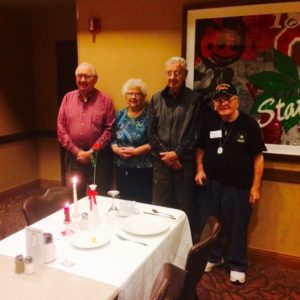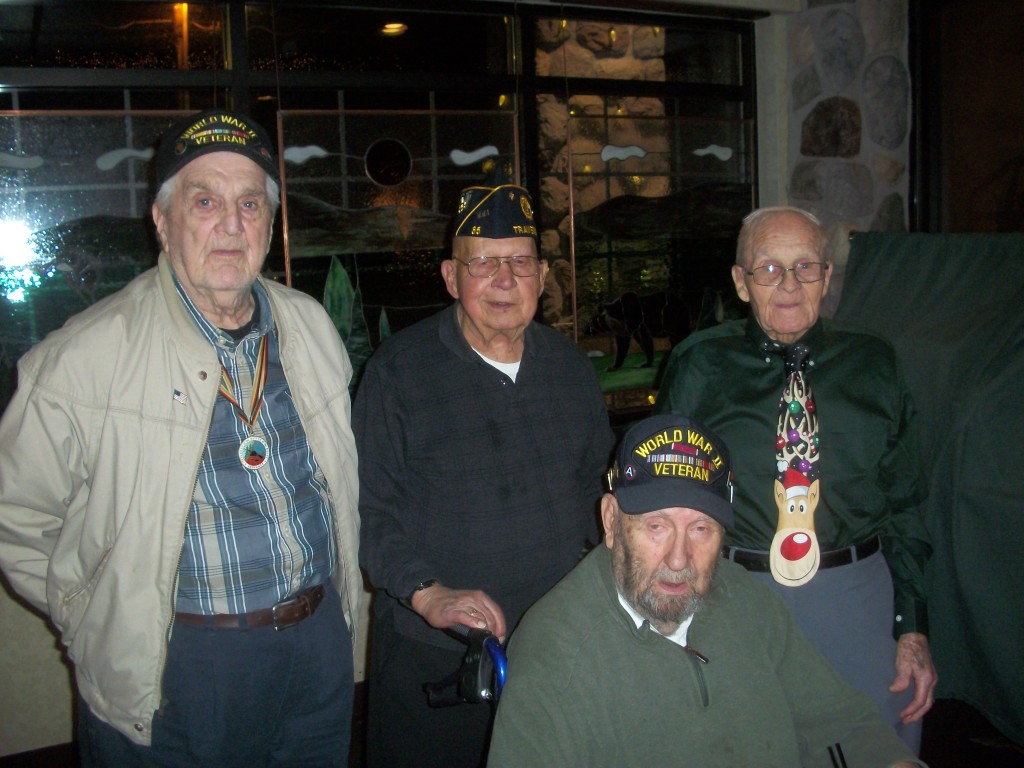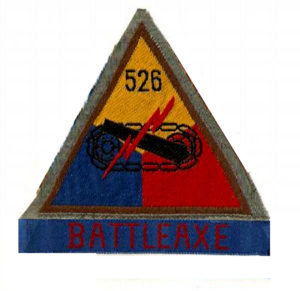 We are sorry to report that the 526th Armored Infantry Battalion Association has disbanded, as announced in the November 2015 [final] issue of The Pekan Newsletter. We thank Glenn Damron, President, and Sherrie Morrison, Editor-Secretary/Treasurer, for the great job they have done in keeping the legacy of the 526th alive all these years. We thought it fitting that we reprint these articles from The Pekan Newsletter.
We are sorry to report that the 526th Armored Infantry Battalion Association has disbanded, as announced in the November 2015 [final] issue of The Pekan Newsletter. We thank Glenn Damron, President, and Sherrie Morrison, Editor-Secretary/Treasurer, for the great job they have done in keeping the legacy of the 526th alive all these years. We thought it fitting that we reprint these articles from The Pekan Newsletter.
—————
VALIANT WARRIORS “VALIDI MILITES”
by Tom Hanchett, M.A., 526th Historian
Reprinted with permission from “The Pekan Newsletter”
The 526th Armored Infantry Battalion played a unique role in the United States Army’s European Theater of Operations during World War II. First, this battalion was the only separate armored infantry battalion (AIB), as they were usually attached to armored divisions. Second, the 526th was the only AIB to train with the top secret canal defense lights, or “Gizmos”, in the Arizona desert and Rosebush, Wales.
In late October 1944, while in Belgium, the 526th was attached to an intelligence organization called T Force, authorized by General Eisenhower soon after D-Day. T Force was designed to rush into captured towns and seize intelligence information and German personnel.
Company C of the 526th was detached and assigned to provide security to Eagle Tac, the advanced headquarters of the Allied Expeditionary Force, including Generals Eisenhower, Bradley, Patton and Simpson. At the end of the war, they provided security to visiting Russian marshals.
On the night of December 17th, 1944, the 526th convoy headed to blunt the German attack, more commonly known as the Battle of the Bulge. A task force comprised of Company A and a platoon from another battalion in T Force, under the command of Major Paul J. Solis, battalion executive officer, was sent to Stavelot. The remaining battalion, under Lt. Colonel Carlisle B. Irwin was ordered to defend Malmedy. As Company B entered Malmedy, some soldiers heard the church bells playing “Yankee Doodle Dandy” to warn the Germans the Americans were coming.
At Stavelot, though outnumbered in an unfamiliar area, Major Solis and Captain Charles Mitchell, Company A commander, set up a strong defense which delayed Colonel Jochen Peiper’s German SS Panzer regiment. Part of a large fuel depot along their retreat route was ordered burned so it would not fall into German hands. Their efforts bought time for American reinforcements to advance, and time for removal of fuel stores.
Throughout December, the 526th fought off the German forces that were trying to take over Stavelot and Malmedy. German Colonel Otto Skorzeny, whose American-uniformed commandos spread confusion behind American lines, led one of these attacks.
Just after New Year 1945, as the Allied command was beginning a large counterattack, the 526th was ordered to attack a German position near Malmedy. In a battle that has gone unrecorded in Battle of the Bulge history books, Company B was ordered to attack a much larger German unit without any support. Company B suffered enormous casualties.
T Force operations commenced again in March 1944 through May 1945, which included seizing the IG Farben plant in Germany. The 526th also guarded top Nazi leaders such as Field Marshals von Rundstedt, Kesselring and Colonel Skorzeny.
————-
A LOVE STORY BEGINS IN LUXEMBOURG 1944
by Triny Morrison
Excerpted with permission from “The Pekan Newsletter”
In late October 1944 some American soldiers came in to our café to drink and bowl in our bowling alley. I stayed in the kitchen, sometimes peeking into the café. I had turned sixteen years old the month before and was quite bashful. This young soldier, blond hair and blue eyes, would sit so he could look into the kitchen when the door opened and closed. Several times I caught him staring at me, which made me turn red as a beet!
The word got around that the Neuser Café was run by a nice family. A few days later, I was sitting at a table working on my homework with my mother and sister Aline, when that same soldier came in and sat at a table across from us. I wanted to move into the kitchen but my mother told me to sit still, act my age, and be polite. When I looked up at him, he would smile and wink at me. He kept drinking beer, which made him so brave. After a while he leaned over my table and started singing “Night and Day” (a popular American song) to me. While I was turning various shades of red, he asked my mother for my name. Then he looked at me and said, “My name is Frank.” My mother had an English-German dictionary from World War I lying on the table. So, there followed a lot of leafing through the dictionary to communicate.
We were told about a big American holiday called Thanksgiving, so my mother cooked a huge meal for Frank and his friends. That evening Frank asked my mother if he could take me on a date. She agreed only if we were always chaperoned by my older sister! We went to see the movie, “The Hunchback of Notre Dame,” starring Charles Laughton and Maureen O’Hara. While we were walking home through our neighborhood Frank spotted a “photo shop” where, a few days later, we had our pictures taken.
Frank would come over often and we would walk around the city, chaperoned of course. I started learning and understanding a few English phrases such as “Hello, Goodbye, Thank You, How are you?, Fine.” Then one day everything changed. The German Army attacked the northern part of our country on December 16, 1944. The Germans were headed north to Antwerp to destroy the American supply ships in that harbor. The Battle of the Bulge had begun. We saw large convoys of American trucks driving through our city on the path to the Ardennes.
General Patton drove the Third Army from France through Luxembourg City up the Skyline Highway to relieve the city of Bastogne. He drove his convoy of trucks and tanks through the streets two blocks from our home. The buildings shook from the tanks rumbling through the streets. We were hearing German Nazi propaganda on our radio, telling us they were destroying the American army all the way into Belgium. German artillery started shooting into our city every evening, attempting to hit the U.S. Headquarters for General Omar Bradley. We were told to stay on the main floors of our buildings because the artillery shots were hitting on the second floors and upwards. It took about two weeks for the Americans to figure out the artillery location – There was an abandoned railway tunnel outside the city about a kilometer away. The German artillery gun was on a railroad flat car. They would roll it out of the tunnel every night after dark and move it back into the tunnel after the artillery barrage.
Then came the day when the Battle of the Bulge was over and the Germans were on the run. Frank told us they were leaving Luxembourg (his Company C had been guarding General Bradley) and rejoining the rest of their battalion in Belgium. He asked for my address and we kissed goodbye All I knew was that he was from California. He asked my mother how old I had to be before he wrote letters. She misunderstood him to ask how old I had to be for marriage! She told him 18 years or older.
The war was over, I had not heard from Frank, and I needed to learn a trade. I went to work in a small workshop, an atelier, to learn how to embroidery on a treadle sewing machine. I was paid for piecework, embroidering handkerchiefs, pillowcases, tablecloths, etc. I came home one day at noon for our supper break, and found the family acting strangely quiet and pointing at a letter. It was a letter from America! It was a letter from Frankie! He did not forget me! It was addressed to “Miss Triny Neuser, c/o Neuser Café, Luxembourg City”, postmarked November 24, 1947.
“Dear Triny, It has been almost three years since I have seen you. I think of you often and miss the swell times we had together. Now that the war is over and things are back to normal I decided to write and see how things are over there. I guess you are having cold weather now. I remember how cold I got on guard duty. Have you guessed who this is yet? Well, dig out your pictures and look me up. We had one taken together. Remember how we used to do your homework in the café? Triny, do you still love me? Guess you want to know what happened to me. From Luxembourg I went to Belgium and then to Germany. I stayed in Germany until December 9, 1945 until I left for the United States. I arrived home on January 3, 1946. I worked on a farm for a while, then went into the bee business, selling honey. Have you ever thought about coming to the U.S. to live? Say, Triny, be sure to write. When I left, you promised to write if I would. With all my love, Frankie
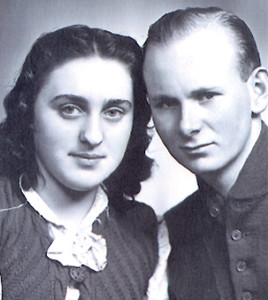
NOTE: Frank and Triny wrote dozens of letters throughout the next year. Frank’s future bride agreed to come to America and marry him. She said goodbye to her family and the only life she knew in Luxembourg. This brave young lady sailed across the Atlantic Ocean on the ship, Cunard White Star S.S. Soythia, docked in Halifax, Canada, and rode the passenger train to California. They were married just a few days later on December 30, 1948. Their first child Edward was born ten months later, then their two daughters Cathryn and Lisa. They are very proud grandparents of six grandchildren, and five great-grandchildren. —Sherrie Morrison, Associate, Daughter-in-Law

 WORLD WAR II ORDER OF BATTLE By Capt. Shelby L. Stanton
WORLD WAR II ORDER OF BATTLE By Capt. Shelby L. Stanton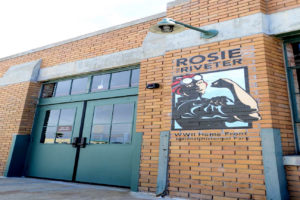 On August 21, 2015, I visited the Rosie the Riveter/World War II Home Front National Historical Park in Richmond, CA (north of San Francisco). This was my 2nd visit there. I highly recommend a visit to this park Visitor Center.
On August 21, 2015, I visited the Rosie the Riveter/World War II Home Front National Historical Park in Richmond, CA (north of San Francisco). This was my 2nd visit there. I highly recommend a visit to this park Visitor Center.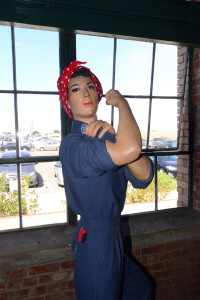 Richmond played a significant and nationally recognized part in the World War II home front. The four Richmond shipyards produced 747 cargo ships, more than any other shipyard complex in the country. Richmond was also home to over 56 different war industries, more than any other city of its size in the United States. The city grew from less than 24,000 people in 1940 to nearly 100,000 people by 1943, overwhelming the available housing, roads, schools, businesses and community services. At the same time, Executive Order 9066 forcibly removed Japanese and Japanese-American residents from the area, disrupting Richmond’s thriving cut-flower industry. The war truly touched every aspect of civilian life on the home front. Through historic structures, museum collections, interpretive exhibits, and programs, the park tells the diverse and fascinating story of the WWII home front.
Richmond played a significant and nationally recognized part in the World War II home front. The four Richmond shipyards produced 747 cargo ships, more than any other shipyard complex in the country. Richmond was also home to over 56 different war industries, more than any other city of its size in the United States. The city grew from less than 24,000 people in 1940 to nearly 100,000 people by 1943, overwhelming the available housing, roads, schools, businesses and community services. At the same time, Executive Order 9066 forcibly removed Japanese and Japanese-American residents from the area, disrupting Richmond’s thriving cut-flower industry. The war truly touched every aspect of civilian life on the home front. Through historic structures, museum collections, interpretive exhibits, and programs, the park tells the diverse and fascinating story of the WWII home front.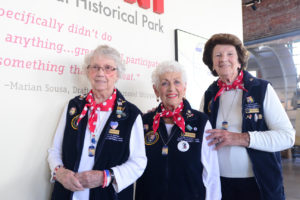

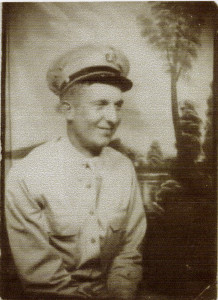

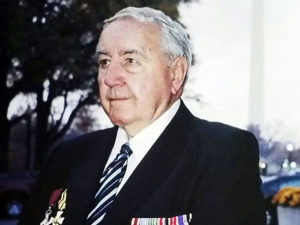
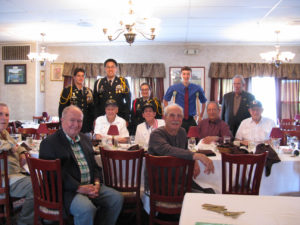

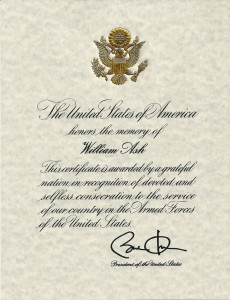
 Who else remembers the great April 1945 POW March from Nuremberg to Stalag VII-A Moosburg? It’s strange how ex-POWs can have sharply different views about the same wartime experience. For me the 100 mile POW march from Stalag XIII-D in Nuremberg to Stalag VII-A in Moosburg in April 1945 was “the best two weeks of captivity”. So much so, that I am taking my family back to Bavaria in April 2016 to retrace this historic POW march with them. (This time, however, not on foot, but traveling in comfort and staying in good hotels.) Why do I feel this way?
Who else remembers the great April 1945 POW March from Nuremberg to Stalag VII-A Moosburg? It’s strange how ex-POWs can have sharply different views about the same wartime experience. For me the 100 mile POW march from Stalag XIII-D in Nuremberg to Stalag VII-A in Moosburg in April 1945 was “the best two weeks of captivity”. So much so, that I am taking my family back to Bavaria in April 2016 to retrace this historic POW march with them. (This time, however, not on foot, but traveling in comfort and staying in good hotels.) Why do I feel this way?
